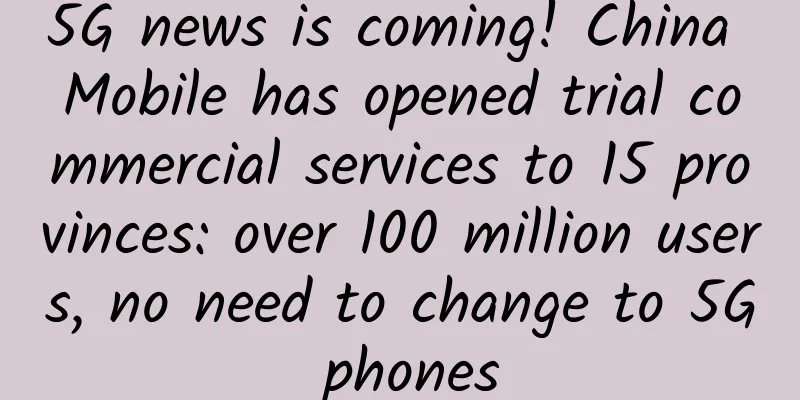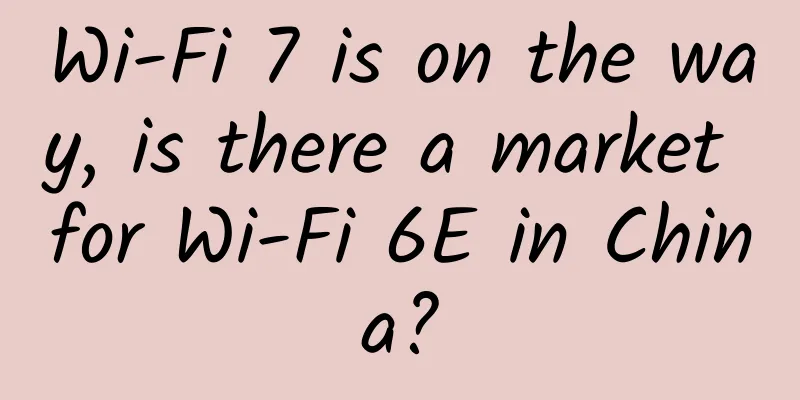What are the remaining obstacles to China's 5G?

|
With the news that Nokia and Ericsson won the bid for China Mobile's 5G procurement plan, the popularity of the keyword 5G has once again reached a new peak. This shows that China is determined not to eat alone. However, although 5G has many benefits for the industry, we should also see that there are still many constraints on its development. 5G infrastructure requires a lot of money The first problem facing the development of 5G is funding. Let's put aside the construction funding of 5G itself. Let's first review the development history of 4G. Since 2013, 4G has been developed for more than 6 years. According to relevant data, by the end of 2017, the total investment of the three major operators, China Mobile, China Unicom, and China Telecom, in 4G networks was about 800 billion yuan. To this day, this number should still be increasing. But even so, the overall cost of the operators has not yet been fully recovered. However, with the issuance of 5G licenses, the main direction is bound to shift. But how to balance the cost? It is indeed a very serious problem. Ren Zhengfei once said in an interview with the media that "5G base stations are as big as a briefcase for documents", which means that they are not as troublesome to deploy as 4G. There is no need to use towers and cranes, and they can even be hung on the wall or placed in the sewer. This is why the FCC is encouraging US operators to deploy base stations on public utility poles as much as possible. Although the cost of deployment is very low, in order to meet the requirements of high traffic density and high peak rate, 5G adopts a macro-micro heterogeneous ultra-dense networking architecture. This requires that the deployment density of base stations must be increased. In the 4G era, the standard distance between two base stations is no more than 1,000 meters, but the distance between 5G small base stations may be controlled within 100 meters or even closer. It can be seen that the number will be huge. Some institutions have predicted that the overall investment of operators in 5G network construction may exceed 1.2 trillion yuan, which is 68% higher than the related investment in 4G. The problem that operators are facing now is that they need to continue to improve the quality of 4G networks while investing a lot of money to build 5G networks and supporting facilities, and at the same time make long-term plans for future operations and maintenance. The financial pressure is huge, which can be seen from this. So, since the cost is so high, does it mean that operators will lose money? That's not the case. According to data from the Ministry of Industry and Information Technology, from January to April 2019, the operating income of the communications industry was 514.5 billion yuan, of which the telecommunications business income was 446.3 billion yuan, an increase of 0.7% over the same period last year. It can be seen that the data of operators is still growing. Some people are worried that 5G will cost more than 4G. But this is actually a little exaggerated. Although the relevant tariff standards for 5G have not yet been officially announced, based on past experience and the opinions of industry insiders, 5G traffic tariffs will only be lower than 4G due to the greater number of allocated frequencies. The experience from 2G to 4G also proves that with the development of technology, the tariff standards for data traffic will only decrease. For example, in the 2G era, it cost 1.5 yuan to surf the Internet for 1 minute, which means that 1GB of traffic costs about 10,000 yuan; in the 3G era, 1GB of traffic also cost around 500 yuan; but in the early days of 4G, the cost of 1GB of traffic was reduced to 30 yuan, and now it is less than 9 yuan. Although it is not cost-effective for operators to launch 5G now from a commercial consumption perspective, as a key infrastructure in the information industrial revolution era, it cannot be measured by short-term economic benefits. Moreover, in the 5G era, the greatest economic benefits will come from the entire industry. Just look at the United States' shameless crackdown on Huawei and you will know the value of 5G. Does excessive density of base stations lead to NIMBY problems? In addition to funding difficulties, another challenge facing telecommunications infrastructure construction is site selection. Concerns about base station radiation may lead to a NIMBY effect, hindering the construction of base stations. This is not uncommon in the construction of communication infrastructure in the past. In the 5G era, when the distance between stations is greatly shortened, such problems may become more common. In addition, site selection is also a problem that needs to be solved in the development of 5G. This is not about the construction address of the base station (so far, more than 2.2 million 4G site facilities have been built, and the sharing rate of new towers is 75%. In addition, the tower company also has 1.95 million of its own stock sites and 10 million reserve site resources), but the NIMBY effect, because the density of base stations is too high, which will cause nearby residents to worry about radiation problems. Although China's base station electromagnetic radiation indicators are even several times higher than those in Europe and the United States, similar problems have occurred in the 4G era before, so it still needs to be solved through government propaganda and guidance. |
<<: On the eve of 5G, mobile phone companies should not panic
>>: Explain RPC and HTTP in plain language
Recommend
The large-scale replication of 5G private network applications urgently needs policy support
Since the license was issued on June 6, 2019, my ...
Three pictures tell you the principles of Linux TCP/IP protocol stack
It is no exaggeration to say that today's Int...
Discussion | Technical advantages of the top 9 leading SD-WAN providers abroad
SD-WAN technology helps make wide area networks m...
DogYun New Year Promotion: 30% off on Elastic Cloud/20% off on Classic Cloud, starting from 16 yuan/month, top up 100 yuan and get 10 yuan free
The Lunar New Year is here, and DogYun has launch...
What makes 5G's peak speed reach 20Gb/s? An article to understand millimeter wave
With the explosion of video content, today's ...
spinservers US servers start at 33% off, 100M unlimited traffic servers start at $69/month, 10Gbps bandwidth servers start at $139/month
spinservers has sent the latest 2023 US Labor Day...
Actual combat case: Explosion! Accessing a certain IP in the intranet caused the entire network loop to crash. The root cause was this lazy configuration...
Background The client company is a retail company...
Learn about MQTT protocol in one article
Today we will talk about the MQTT protocol in det...
RackNerd: $39/month-E5-2690/4GB/120GB/5TB/San Jose & Seattle & Dallas, etc.
The tribe has shared a lot of cheap RackNerd VPS ...
Global 5G War: New Progress of Foreign Operators
2020 was supposed to be the year 5G went global, ...
DiyVM: Hong Kong/Japan/US VPS 2G memory starting from 50 yuan/month, CN2 line optional
DiyVM is a Chinese hosting company that has been ...
SmartHost: VPS 30% off from $2/month, 29 computer rooms, optional AMD Ryzen+NVMe, optional large hard disk
A few days ago, we shared the information about S...
Why do many people still insist on buying 4G mobile phones even though 5G networks have been fully commercialized?
Although 5G networks have been fully commercializ...
iPhone 12 will be released next week, but 5G in the US won't work at all
Apple announced in the early morning of October 7...
Optical transceivers, repeaters, and muxponders: Which is right for your network?
Fiber optic networks use a variety of devices tha...









